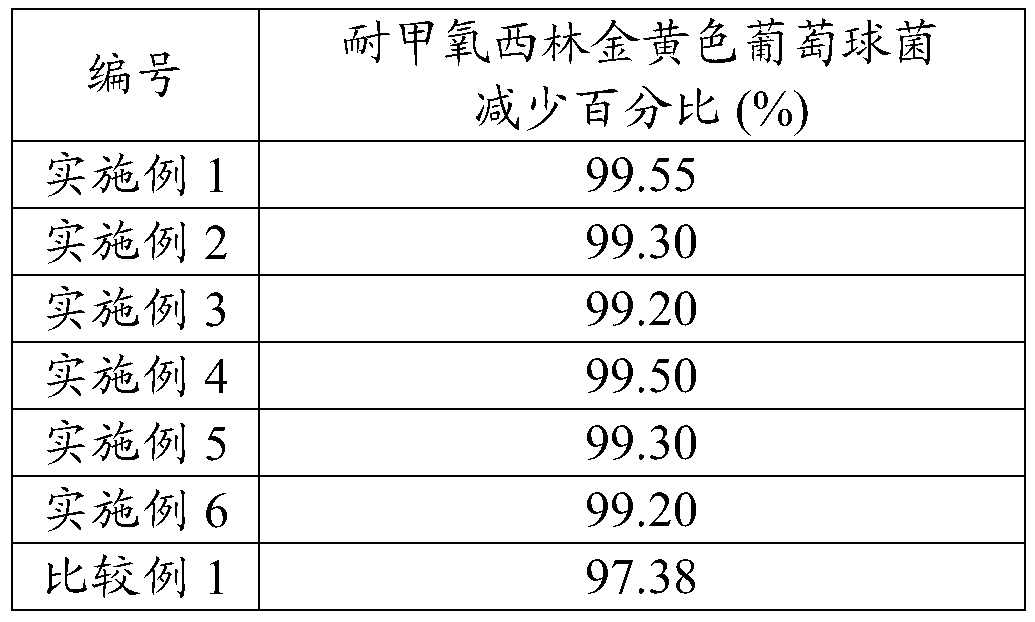Textile and application of textile to restraining methicillin-resistant staphylococcus aureus
A methicillin-resistant Staphylococcus technology, applied in the field of textiles and its application in inhibiting methicillin-resistant Staphylococcus aureus, can solve the problems of high moisture regain and no antibacterial
- Summary
- Abstract
- Description
- Claims
- Application Information
AI Technical Summary
Problems solved by technology
Method used
Image
Examples
Embodiment 1
[0065] The textile of this example is formed of 40 wt% inner layer and 60 wt% outer layer. The inner layer is formed by blending 40wt% of blended staple fibers (with a yarn count of 60S) and 60wt% of lyocell staple fibers (with a yarn count of 60S). The outer layer is formed of 70 wt% lyocell filaments (80 denier) and 30 wt% polyester filaments (80 denier). The staple blend was formed from 12 wt% PHBV and 28 wt% PLA based on the total weight of the inner layer.
Embodiment 2
[0067] The textile of this example is formed of 40 wt% inner layer and 60 wt% outer layer. The inner layer is formed by blending 40wt% of blended staple fibers (with a yarn count of 60S) and 60wt% of lyocell staple fibers (with a yarn count of 60S). The outer layer is formed of 70 wt% lyocell staple fibers (60S yarn count) and 30 wt% polyester staple fibers (60S yarn count). The staple blend was formed from 12 wt% PHBV and 28 wt% PLA based on the total weight of the inner layer.
Embodiment 3
[0069] The textile of this example is formed of 40 wt% inner layer and 60 wt% outer layer. The inner layer is formed by blending 40wt% of blended staple fibers (with a yarn count of 60S) and 60wt% of polyester staple fibers (with a yarn count of 60S). The outer layer is formed of 70 wt% lyocell filaments (60 denier) and 30 wt% polyester filaments (60 denier). The staple blend was formed from 12 wt% PHBV and 28 wt% PLA based on the total weight of the inner layer.
PUM
 Login to View More
Login to View More Abstract
Description
Claims
Application Information
 Login to View More
Login to View More - R&D
- Intellectual Property
- Life Sciences
- Materials
- Tech Scout
- Unparalleled Data Quality
- Higher Quality Content
- 60% Fewer Hallucinations
Browse by: Latest US Patents, China's latest patents, Technical Efficacy Thesaurus, Application Domain, Technology Topic, Popular Technical Reports.
© 2025 PatSnap. All rights reserved.Legal|Privacy policy|Modern Slavery Act Transparency Statement|Sitemap|About US| Contact US: help@patsnap.com

